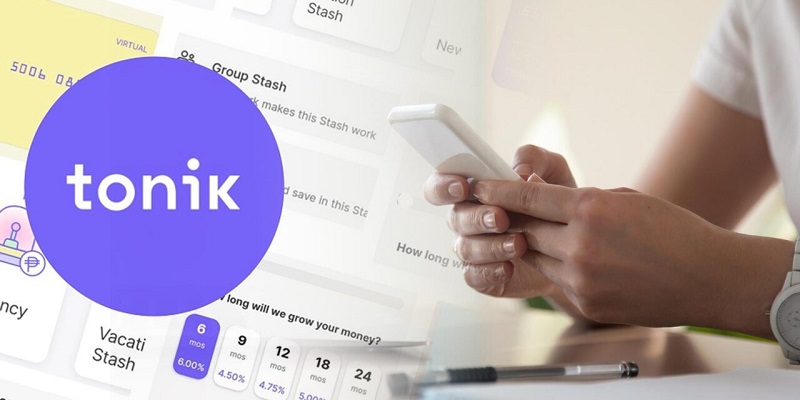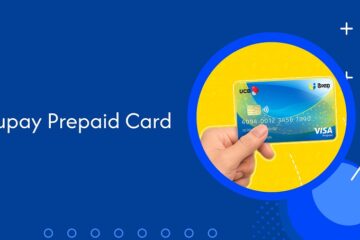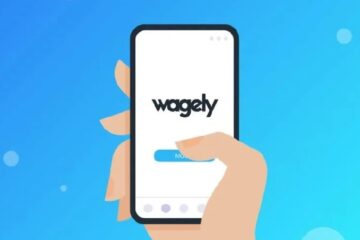Tonik is Southeast Asia’s first fully digital bank that was launched in the Philippines in 2021. As a neobank, Tonik operates entirely without physical branches, delivering banking services through a mobile-first platform. It is regulated by the Bangko Sentral ng Pilipinas (BSP) and offers a wide range of financial products tailored to meet the needs of both banked and underserved populations. The bank focuses on financial inclusion, competitive savings products, and a user-friendly experience designed for the region’s digitally savvy consumers.
This case study examines how Tonik entered the competitive financial landscape in Southeast Asia, its innovative business model, its approach to leveraging technology, and the impact it has had on digital banking in the region.
Background and Market Context
Tonik was launched to address the significant gap in financial inclusion in the Philippines, where a large portion of the population remains unbanked or underbanked. According to BSP data, about 70% of Filipino adults did not have access to formal banking services as of 2021. Despite the widespread availability of mobile phones and internet connectivity, traditional banks have struggled to reach rural and underserved communities due to the high costs of maintaining physical branches.
Tonik aimed to solve this problem by offering a digital-only banking platform, providing easy access to savings accounts, term deposits, loans, and payment services through its mobile app. By leveraging the digital ecosystem and focusing on a mobile-first strategy, Tonik capitalized on the growing demand for convenient, affordable, and accessible banking in the Philippines.
Business Model and Product Offering
Tonik’s business model centers around low-cost operations and technology-driven innovation, allowing it to offer competitive products with no or minimal fees. By eliminating the need for physical branches, Tonik reduces overhead costs, which allows it to offer attractive interest rates and banking products for consumers who are looking for better returns on their savings or more convenient financial services.
Key Products and Services
- High-Interest Savings Accounts: Tonik offers savings accounts with significantly higher interest rates compared to traditional banks. Customers can earn up to 6% interest annually on their savings, far exceeding the average rates offered by brick-and-mortar institutions. This feature has been a major draw for Filipinos looking to grow their savings more quickly.
- Time Deposit Products: Tonik’s time deposit accounts offer even higher interest rates, going up to 6.5% depending on the deposit term. These deposits allow customers to earn higher returns by locking in their money for a set period, making it an attractive option for long-term savers.
- Tonik Stash: A unique feature of Tonik is its “Stash” account system, which allows users to create sub-accounts for different savings goals. For example, users can set up a Stash for emergencies, vacations, or any personal goal. This helps users manage their savings in a more organized way and stay on track with their financial objectives.
- Solo and Group Stash: In addition to individual Stash accounts, Tonik also offers Group Stash, which allows multiple users to save together for a common goal. This collaborative savings tool is ideal for families, friends, or communities looking to pool funds for a specific purpose, such as buying a property or funding an event.
- Quick Loan: Tonik launched a Quick Loan product, offering unsecured loans with minimal documentation and fast approval processes. The bank uses alternative credit scoring methods, leveraging customer transaction data to evaluate creditworthiness, which enables more Filipinos to access credit.
- Mobile Payments and Transfers: The bank offers mobile payments and real-time transfers through its app, enabling customers to pay bills, transfer funds, and conduct other essential banking transactions seamlessly. Tonik’s integration with the Philippines’ Instapay system allows customers to make instant payments to and from other banks.
Technology and Innovation
Tonik is built on a digital-first infrastructure, which allows it to provide a seamless user experience while maintaining operational efficiency. Technology plays a key role in Tonik’s ability to scale rapidly and deliver innovative financial products that meet the specific needs of the Filipino market.
- Cloud-Based Banking Infrastructure
Tonik operates on a cloud-based infrastructure, which provides scalability, flexibility, and cost-efficiency. By using the cloud, Tonik can easily manage large volumes of transactions, rapidly roll out new products, and ensure uptime and security.
- Cost Efficiency: Cloud computing allows Tonik to significantly reduce the costs associated with traditional banking infrastructure, such as physical servers and branch networks. These savings are passed on to customers through lower fees and higher interest rates.
- Agility: Tonik’s cloud-based setup enables quick updates and improvements to its app, ensuring that the platform remains user-friendly and secure as customer demands evolve.
- AI-Powered Personalization
Tonik leverages artificial intelligence (AI) and machine learning to deliver a personalized banking experience. AI-driven algorithms analyze customer behavior and transactions to offer tailored recommendations and insights, helping customers manage their finances more effectively.
- Credit Scoring: AI-based credit scoring models allow Tonik to assess customers’ creditworthiness even if they have limited or no traditional credit history. By using transaction data and digital behavior patterns, Tonik can offer loans to a broader range of customers.
- Financial Management: AI-powered personal financial management (PFM) tools help users track their spending habits, optimize their savings, and receive personalized advice on how to achieve their financial goals.
- Digital Onboarding and KYC
Tonik provides a fully digital onboarding process for new customers, allowing them to open accounts in just minutes using their smartphones. The bank uses digital Know Your Customer (KYC) processes, including facial recognition and document uploads, to verify customer identities and ensure regulatory compliance.
- User-Friendly Account Opening: Customers can open an account by simply downloading the Tonik app, uploading a government ID, and taking a selfie for identity verification. The entire process is quick, eliminating the need for physical branch visits or paperwork.
- Enhanced Security: By using biometric authentication, Tonik ensures secure access to accounts and prevents fraud. The bank uses multi-factor authentication (MFA) and encryption to protect customer data and transactions.
Customer Acquisition and Growth Strategy
Tonik’s customer acquisition strategy is driven by a combination of digital marketing, partnerships, and referral programs. The bank focuses heavily on acquiring younger, tech-savvy users who are looking for a more convenient and accessible banking experience.
- Digital Marketing and Social Media Campaigns
Tonik uses targeted digital marketing campaigns on platforms such as Facebook, Instagram, and YouTube to engage potential customers. The bank’s marketing emphasizes its high interest rates, no-fee accounts, and user-friendly mobile app.
- Branding: Tonik positions itself as a bold and innovative brand, appealing to younger generations who are comfortable with digital-first solutions and prefer a bank that understands their needs.
- Referral and Rewards Programs
Tonik incentivizes customers to refer friends and family by offering referral bonuses. These programs not only drive user growth but also create a sense of community among customers, who are encouraged to share their positive experiences.
- Partnerships with FinTechs
Tonik partners with local FinTech companies to offer complementary financial services, such as payment gateways and digital lending platforms. These partnerships help the bank expand its ecosystem and deliver more value to customers.
Challenges and Opportunities
Challenges
- Competition with Traditional Banks: While Tonik has positioned itself as a disruptive force in the banking sector, it faces stiff competition from established traditional banks that are increasingly adopting digital banking services. Major players like BDO Unibank and UnionBank have begun rolling out their own mobile apps and digital offerings, which could pose a challenge for Tonik’s growth.
- Building Trust: As a new digital-only bank, Tonik needs to build trust among Filipino consumers, particularly those who are accustomed to traditional banks with physical branches. The challenge lies in convincing users that their funds and data are secure in an entirely digital environment.
- Profitability: Like many digital banks, Tonik may face challenges in achieving long-term profitability, especially with its no-fee and high-interest product offerings. It will need to balance customer acquisition with cost management and revenue generation.
Opportunities
- Expanding Financial Inclusion: The Philippines has a large unbanked population, and Tonik has a significant opportunity to expand financial inclusion by offering simple, affordable, and accessible banking products. The bank can focus on serving rural areas and underserved segments of the population who may not have access to traditional banking services.
- Product Diversification: Tonik can expand its product portfolio by introducing new services such as Buy Now, Pay Later (BNPL), insurance, and investment products. Diversifying its offerings will not only attract more customers but also help the bank generate additional revenue streams.
- Regional Expansion: With its success in the Philippines, Tonik could consider expanding its digital banking services to other Southeast Asian markets, such as Indonesia, Vietnam, or Thailand, where there are similar gaps in financial inclusion and growing demand for digital financial services.
Tonik’s entry into the Southeast Asian banking landscape marks a pivotal moment for digital banking in the region. As Southeast Asia’s first purely digital bank, Tonik has leveraged technology and innovation to deliver a customer-centric, mobile-first banking experience that meets the unique needs of Filipino consumers. With its focus on financial inclusion, competitive interest rates, and user-friendly digital products, Tonik is well-positioned to grow its customer base and expand its influence in the region.
The key to Tonik’s success will be its ability to build customer trust, maintain its competitive edge through continuous product innovation, and capitalize on the growing demand for digital financial services in Southeast Asia. As the region’s digital banking sector continues to evolve, Tonik’s model could serve as a blueprint for other neobanks looking to disrupt traditional financial services.










